Exploring the Bin Suloom Building in Dubai's Market
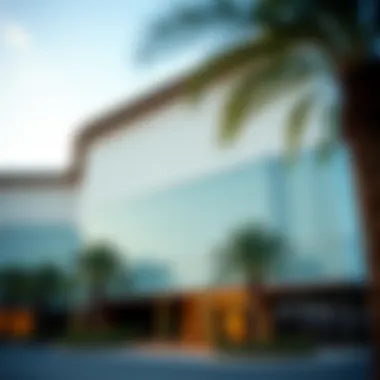
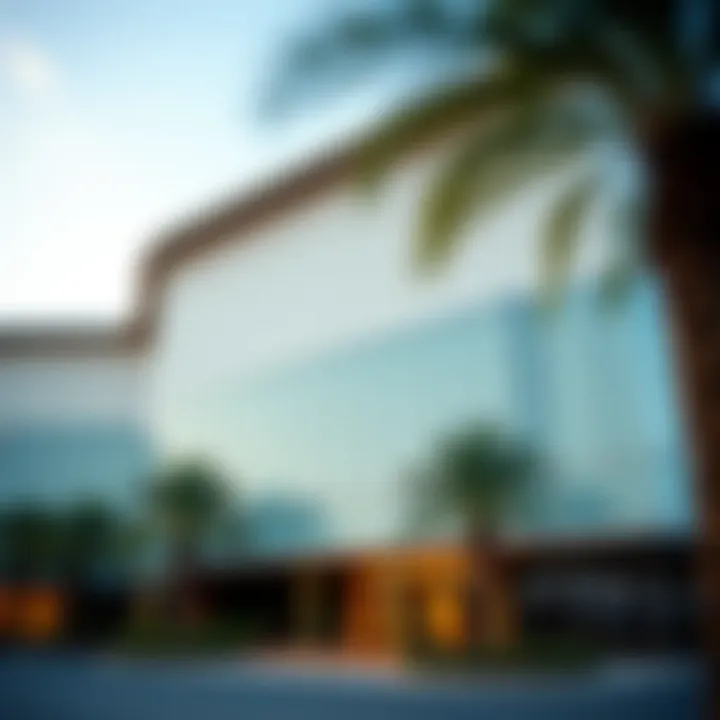
Market Trends
Understanding the dynamics of Dubai's real estate scene requires a glance at current market trends, particularly as they pertain to iconic structures like the Bin Suloom Building. This landmark, amidst the flurry of development in Dubai, serves as a unique case study reflecting both stability and rapid evolution in the property market. Here’s a closer look at the key elements shaping the landscape today.
Current Property Prices
As of late 2023, property prices in Dubai have demonstrated a mixed bag. The Bin Suloom Building, nestled within a pivotal area of the city, shows competitive pricing. While average property prices in the region have seen a gradual uptick, with reports indicating an increase of approximately 5-7% over the past year, certain high-demand locales near the building can command premiums well above the average.
A breakdown of the current prices showcases:
- Studio Apartments: Ranging between AED 600,000 to AED 800,000.
- One-Bedroom Units: Typically falling between AED 800,000 and AED 1.2 million.
- Commercial Spaces: Varying widely based on size, with estimates often starting at AED 2 million.
These prices indicate robust demand, largely fueled by a combination of expat relocations and international investments. Investors need to keep an eye on these trends as they can shift rapidly based on local and global economic factors.
Upcoming Developments
In the vicinity of the Bin Suloom Building, a series of developments are on the horizon. Projects like the new community parks and integrated retail spaces are set to augment the attraction of this area, consequently impacting property values positively. Developers have announced:
- Mixed-Use Complexes: Scheduled for opening in late 2024, blending residential, retail, and leisure experiences, promising to draw even more residents.
- Transport Infrastructure Improvements: Enhanced public transit via a new metro line, expected to begin operations by 2025. This will significantly boost accessibility.
Such developments contribute to an expected boost in property desirability and help futureproof investments in the region. Understanding these upcoming trends is critical for potential investors and buyers alike.
"When it comes to investing, knowing the trends can make the difference between a sound decision and a costly mistake."
Investment Strategies
Investing in property, notably in a thriving market like Dubai, requires careful consideration and a strategic approach. Understanding how to navigate financing and mitigate risks is essential for success in such a competitive landscape.
Financing Options
In a city renowned for its luxury and fast-paced developments, financing options for property purchases are as varied as they are crucial. Prospective buyers should explore:
- Mortgage Options: Many banks offer competitive interest rates, tailored for both residents and non-residents. It's essential to compare different mortgage lenders to find the best deal suitable for your financial situation.
- Cash Purchases: Often preferred for their simplicity and the potential for discounts from sellers, cash buyers can negotiate better offers.
Additionally, exploring partnerships with real estate investment firms can spread financial risk while allowing access to larger properties.
Risk Management Tips
Investing in real estate is never without risks, yet there are ways to manage them effectively. Strategies include:
- Conducting Thorough Research: Stay informed about market shifts, property evaluations, and pending developments that could affect your investment.
- Diversifying Investments: Don’t put all your eggs in one basket. Consider investing in varied property types to balance potential risks.
In summary, understanding market trends, prices, and investment strategies not only prepares potential buyers but also enhances their confidence in navigating the complex world of Dubai’s real estate. Each piece of information acts as scaffolding, supporting a well-rounded approach to property investment.
Preamble to the Bin Suloom Building
The Bin Suloom Building stands as a pivotal landmark amid Dubai's rapidly evolving landscape. As one delves into the realm of property investment or seeks a place to call home, understanding key structures like the Bin Suloom is essential. This building does not merely represent bricks and mortar; it embodies the hustle and bustle of a vibrant community while also serving as a testament to architectural innovation.
In a city renowned for its dynamic skyline, the Bin Suloom Building draws attention not just for its aesthetics but also its role within the market. Properties in prime locations often reflect the pulse of the economy, and the Bin Suloom is no exception. The way it merges modern living with cultural roots provides valuable insights.
Real estate professionals, potential investors, and even renters can glean much from the study of such structures. Knowing about the Bin Suloom offers a window into historical contexts, architectural design, and the nuances of market trends that can deeply influence one’s investment decisions.
Overview of the Structure
The Bin Suloom Building, with its contemporary design, incorporates elements that reflect both modernity and the rich culture of Dubai. Rising elegantly against the skyline, the building commands attention. Its design employs a mix of steel and glass, utilizing natural light to enhance the living and working environments within.
Occupying a strategic location, the structure provides unparalleled views of the city, serving as a perfect vantage point for both work and relaxation. This thoughtful positioning not only elevates the quality of life for residents but also adds to its market appeal.
Some key features that define the structure include:
- Height: The towering ceilings create an air of spaciousness.
- Floor Plan: An intelligent layout maximizes both function and aesthetics.
- Facilities: Amenities such as fitness centers and rooftop gardens enhance the living experience.
These elements combine to make it not just a place to live or work but a lifestyle choice, resonating well within the diverse fabric of Dubai's property market.
Architectural Design and Features
In the world of architecture, every detail matters, and the Bin Suloom Building is a fine example of this philosophy. The façade draws on local history while looking ahead to futuristic concepts. The use of indigenous materials connects it with the heritage of Dubai while contrasting beautifully with its modern design.
One can notice the sleek lines and open spaces that aim to foster community and connectivity among its occupants. The architect’s vision seems to play with light and texture, achieving a balance that feels both welcoming and inspiring.
Some noteworthy architectural features include:
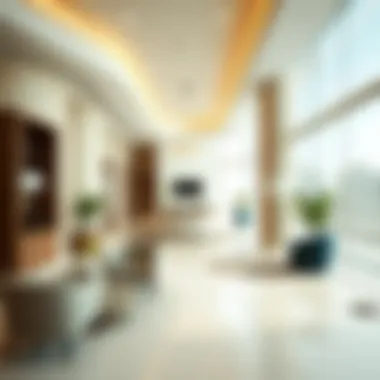
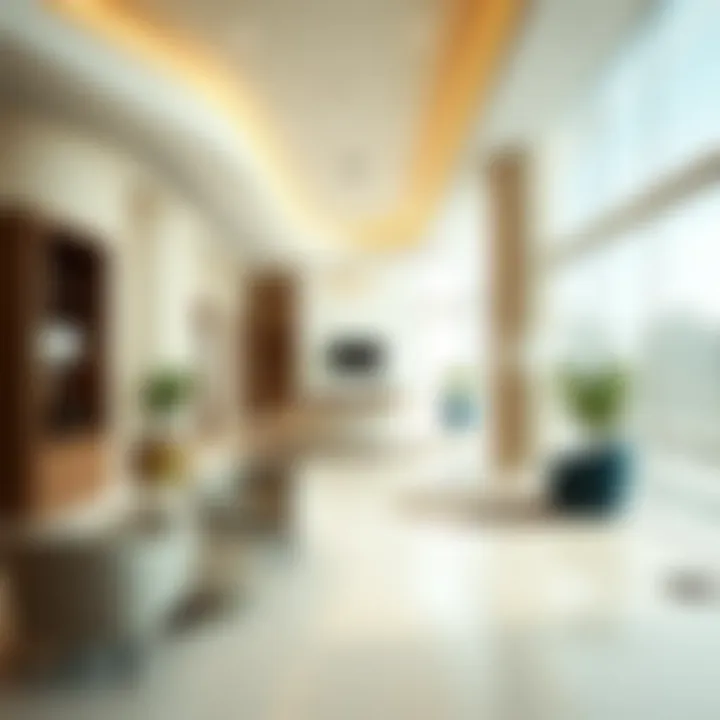
- Eco-friendly Design: Sustainability is at the forefront, showcasing innovative water management and energy-efficient systems.
- Cultural Integration: The design mirrors traditional patterns, providing a sense of continuity within the urban tapestry.
- Adaptable Spaces: Flexible layouts allow for a variety of uses, catering to a diverse population.
The thoughtful blend of these elements positions the Bin Suloom Building as not merely a structure, but as a vital participant in the larger narrative of Dubai’s real estate evolution.
"The Bin Suloom Building exemplifies the harmony between tradition and modernity, crucial for urban living in a city that constantly reinvents itself."
As we explore further into this article, a comprehensive understanding of the building's historical significance, structural specifics, and market value will unfold, painting a fuller picture of its role in the bustling real estate scene of Dubai.
Historical Background
Understanding the historical background of the Bin Suloom Building reveals not only its architectural journey but also encapsulates the evolving narrative of Dubai itself. This section seeks to illuminate the intricate layers that define this landmark. The building stands as a testament to the rapid progression of Dubai's real estate development, reflecting shifts in cultural and economic paradigms. Knowing its history can unveil crucial insights for potential investors, real estate agents, and other stakeholders involved in this dynamic market.
Timeline of Development
The timeline of the Bin Suloom Building's development begins in the early 2000s, a period marked by explosive growth in the city. Initially conceived as part of a larger urban planning initiative, the construction kicked off in 2005 and took several years to complete due to various factors including regulatory challenges and shifts in market demand.
- 2005-2007: The foundation and structural framework were laid down. During these years, the building's design started to take shape, showcasing an innovative blend of modern and traditional architectural features.
- 2008: Completion of the primary structure coincided with global financial disruptions, but the project persevered, reflecting the resilience of Dubai's real estate sector.
- 2010: The building officially opened, heralded as a new symbol of modernity in the ever-evolving skyline of the city. Notably, it attracted a mix of both international buyers and local investors looking to capitalize on the emerging market.
- 2012-Present: Various enhancements and updates have been made to the initial structures to align them with more sustainable practices, thereby responding to the growing trend of eco-conscious building in the Middle East.
This timeline serves to highlight how the Bin Suloom Building has responded to both economic trials and shifts in architectural demands, cementing its role as a key player in Dubai's property landscape.
Cultural Significance
The Bin Suloom Building is not merely a structure; it embodies a cultural narrative that resonates deeply within the community. It serves multiple purposes that go beyond residential or commercial uses, shaping interactions and fostering a sense of identity among its occupants. The building has become a gathering point for events that celebrate local heritage, acting as a bridge between traditional values and contemporary living spaces.
- Symbol of Progress: With Dubai positioning itself as a global city, the Bin Suloom Building stands as a symbol of the ambitious dreams and aspirations of its residents and the broader Emirati culture.
- Focus on Diversity: The architecture and design choices reflect Dubai's multicultural tapestry, attracting not just local UAE nationals but also expatriates from various backgrounds. This mix enriches communal interactions and contributes to a vibrant neighborhood.
- Community Engagement: Over the years, various artistic installations and cultural exhibitions have been hosted in the building, aimed at fostering community engagement and providing a platform for local artists.
By weaving together such intricate cultural threads, the Bin Suloom Building not only transforms the skyline but also the community fabric itself, encouraging both residents and visitors to appreciate Dubai as an innovative yet culturally rich environment.
Structural Specifications
The structural specifications of a building are crucial to understanding its longevity, safety, and overall appeal in the real estate landscape. When potential investors and homebuyers survey properties, understanding the technical underpinnings ensures they are making informed decisions. The Bin Suloom Building, being a notable contender in Dubai’s property market, showcases a variety of structural features that enhance both its aesthetic and functional capabilities.
Material Composition
The material composition of the Bin Suloom Building speaks volumes about its durability and contemporary design. Built primarily from high-quality reinforced concrete, the structure emphasizes not just strength but also thermal efficiency. It's essential to note that the choice of materials can significantly affect the maintenance costs, energy consumption, and even the building's resale value.
- Concrete: Widely used for structural elements due to its ability to bear loads and resist weathering.
- Glass Facades: These enhance the aesthetic appeal and allow natural light to flood the interiors, creating an inviting environment while reducing the need for artificial lighting.
- Steel Framework: Provides additional support and allows for flexible design options, making the building adaptable.
Such considerations in material usage reflect the commitment to quality and sustainability in construction. By selecting robust and environmentally friendly materials, the Bin Suloom Building not only meets the needs of today but also anticipates future demands in architectural standards.
Sustainability Features
In today’s real estate market, sustainability features are no longer a luxury; they’ve become a necessity. The Bin Suloom Building integrates multiple sustainability features that aim to minimize its ecological footprint while maximizing efficiency. Here are some key components:
- Solar Panels: Positioned strategically to harness sunlight, they provide renewable energy, significantly reducing electricity costs for tenants.
- Rainwater Harvesting: This system captures and recycles rainwater, providing a sustainable water source for landscaping and other non-potable uses.
- Green Roofs: These not only improve air quality but also help in regulating temperature, adding insulation and reducing energy costs.
- Energy-efficient HVAC Systems: Modern heating, ventilation, and air conditioning systems enhance comfort while consuming significantly less energy.
These sustainability features not only contribute to a lower operational cost but also appeal to environmentally-conscious investors and tenants. Such considerations align perfectly with the increasing shift towards sustainable living and can potentially enhance the property's value over time.
"Investing in sustainable properties not only protects the environment but also ensures a substantial return on investment in the long run."
The meticulous attention to structural specifications, particularly in material choices and sustainability practices, positions the Bin Suloom Building favorably within Dubai’s ever-evolving real estate landscape.
Market Value and Real Estate Trends
The market value of a property, especially in a bustling hub like Dubai, is one of the pillars that supports the broader conversation about real estate trends. The importance of understanding this market value and its fluctuations is not just for those flipping properties or engaging in high-level trades; it’s inherently critical for homebuyers, renters, and investors alike. Grasping the nuances of market value allows stakeholders to make informed decisions that align with their financial goals.
Current Market Value
As of now, the Bin Suloom Building's market value stands at a noteworthy figure in the region, reflecting both its premium location and architectural prestige. To put it into perspective:
- The estimated value has been pegged around AED 15 million, deriving from its upscale amenities and proximity to essential services.
- Properties in the vicinity of the Bin Suloom have seen an uptick in interest, particularly among expatriates seeking a blend of comfort and luxury.
Market evaluations can fluctuate based on a myriad of reasons: economic conditions, infrastructure developments, and changes in buyer demographics. Recent trends show Dubai's real estate sector adapting rapidly, with a more pronounced focus on sustainable living and quality of life enhancements, further stitching the relevance of locations like the Bin Suloom into the fabric of the city.
Predicted Future Trends
Looking ahead, market analysts are optimistic regarding the trajectory of the Bin Suloom Building's value. A few anticipated trends are worth taking note of:
- Increased Demand for Sustainable Properties: With rising awareness about sustainability, properties that incorporate eco-friendly designs are likely to hold or increase their value. The Bin Suloom is perceived to be ahead of the curve regarding sustainability features.
- Shift Towards Mixed-Use Spaces: The future is looking bright for developments that blend residential with commercial spaces. This trend aligns with urban living ideals, making the Bin Suloom an attractive choice for both renters and investors.
- Government Initiatives and Regulations: The UAE government’s initiatives to bolster the property sector, such as easing visa regulations for real estate investors and promoting innovation in urban planning, could further inflate the property’s value in the coming years.
"Real estate is not just about properties; it's about people and places. The soul of the community often determines market trends."


All in all, discerning the current market value alongside predicted future trends sheds light on not merely financial metrics but on the potential of living and working spaces in congruence with the heart of Dubai's ever-evolving identity.
Investment Opportunities
Investment opportunities related to the Bin Suloom Building present a compelling blend of advantages and potential pitfalls for a variety of stakeholders in Dubai’s vibrant real estate market. Given the building's architectural prominence and strategic location, it holds significant appeal not just for individual buyers but also for larger investment groups looking to expand their portfolios in this bustling city.
Residential vs. Commercial Spaces
When considering the Bin Suloom Building, one must evaluate the distinction between residential and commercial spaces. Each type caters to differing demographics and market needs.
- Residential Spaces: These units often attract young professionals and families seeking a modern lifestyle in lively surroundings. The Bin Suloom's positioning means residents have access to restaurants, shops, and parkland, creating a desirable living experience.
- Commercial Spaces: These attract businesses and entrepreneurs looking for a foothold in Dubai's dynamic landscape. The building’s visibility and accessibility might serve as a magnet for new startups and established businesses wanting to expand operations in the region.
The blend of these two types of spaces within the Bin Suloom Building not only diversifies its uses but also its revenue potential. Investors must carefully assess local demand trends to determine which type aligns best with their investment strategy.
Rental Potential
In terms of rental potential, the Bin Suloom Building stands poised to offer lucrative returns. With a growing population in Dubai and an increasing influx of expatriates, rental demands continue to soar. This means that both residential and commercial units can attract a steady stream of tenants.
- For Residential Investors: High occupancy rates can be expected, especially if the building includes modern amenities like fitness centers, pools, and common recreational areas.
- For Commercial Investors: The demand for office spaces remains strong, fueled by continual foreign direct investment in the region. Businesses often seek flexible lease terms that match their growth trajectories, allowing property owners to implement competitive pricing strategies.
It's important to analyze market conditions and comparable rental prices to maximize revenue. This could involve working with local real estate experts or diving into reports and market analytics provided by resources like Zillow or Realtor.
"In property investment, the key to success lies in knowing when to buy, how long to hold, and understanding your market."
Neighborhood Analysis
Understanding the neighborhood where a property is situated is critical for any real estate consideration. Beyond the walls of the Bin Suloom Building itself, the surrounding area contributes greatly to its appeal and value. Buyers, renters, and investors alike must grasp how local amenities and transport links shape the experience of living or working near this iconic structure. A favorable neighborhood can increase property value, render it more desirable, and ensure a satisfying lifestyle for its residents.
Local Amenities
The Bin Suloom Building benefits from a vibrant array of local amenities. The neighborhood is replete with essential services and recreational options that cater to residents and visitors alike.
- Retail Establishments: Residents can enjoy a variety of shopping options, from high-end boutiques to larger retail chains offering everything from clothes to gadgets. Iconic malls like The Dubai Mall or Mall of the Emirates aren’t too far, providing a plethora of shopping experiences.
- Dining Choices: Whether it’s street food or fine dining, the choices are endless. Local eateries often serve traditional Emirati cuisine, while international flavors are also well-represented.
- Health Facilities: Accessibility to healthcare services is another plus. Major hospitals and clinics are within minutes reach, ensuring peace of mind for residents and their families.
- Recreational Spaces: Parks and green spaces can be found nearby, providing a welcome escape from the urban grind. These locations not only bolster the community spirit but also help in promoting an active lifestyle.
These amenities significantly enhance the living experience around Bin Suloom Building, making it a potential goldmine for both investors and homeowners seeking a rich lifestyle.
Transport Links
Transport connectivity is another towering pillar in assessing the viability of a property. The Bin Suloom Building shines in this regard. Its location is well-serviced by multiple transport options:
- Metro Access: The Dubai Metro has several stations within close proximity, providing efficient and affordable access to various parts of the city. This allows for easy commuting to business districts or leisure activities.
- Bus Services: A comprehensive bus network complements the metro system, ensuring that even areas not directly covered by the rail are still easily reachable. Buses run frequently, connecting residents to key locations including educational institutes and hospitals.
- Major Roads: Direct access to major thoroughfares means that car owners can enjoy quick travel times to neighboring emirates, making it a strategic spot for those who require frequent travel.
- Cycling and Walking Paths: There’s a rising trend in promoting healthier lifestyles through cycling and walking. The establishment of dedicated paths encourages these modes of transport, benefiting the environment while enhancing community interaction.
“Location isn’t just a point on a map; it’s a perspective on the lifestyle one desires.”
Regulatory Framework
Understanding the regulatory framework surrounding the Bin Suloom Building is crucial for potential investors and homebuyers. This section highlights the intertwined relationship between real estate regulations and property investment, providing clarity on legal contexts, ownership structures, and necessary compliance measures. Dubai is known for its continuously evolving property regulations, creating an environment where rules that govern buying, selling, and leasing must be thoroughly understood.
Legal Considerations for Buyers
When venturing into property investment in Dubai, especially with the Bin Suloom Building in sight, there are specific legal nuances buyers must navigate.
- Due Diligence: Before committing to a purchase, conducting thorough due diligence ensures that the property is free from encumbrances. This checks for liens, outstanding debts, and ownership rights, providing peace of mind before signing any contracts.
- Documentation: Buyers should be familiar with essential documents like title deeds, which confirm ownership. This documentation is critical to establish a legal claim over the property. That means inspecting every detail, no matter how minor it seems.
- Escrow Accounts: Often, money is moved through escrow accounts during transactions to safeguard buyer funds. It ensures that the funds are released only when both parties meet their obligations.
It’s also wise to consult with legal professionals who are familiar with local laws and regulations concerning real estate. This expertise can prevent costly mistakes that arise from oversight or misunderstanding.
Property Ownership Laws
In Dubai, the landscape of property ownership laws varies significantly depending on nationality, type of property, and location. Here are critical aspects to consider:
- Freehold vs. Leasehold: Investors can primarily purchase freehold properties, granting full ownership rights, primarily in designated areas. Alternatively, leasehold arrangements allow foreign investors to buy property for a fixed period, typically 99 years, after which rights revert to the property owner.
- Foreign Ownership Limits: Laws stipulate that foreign individuals and entities can own 100% of properties in specific zones. Familiarity with these areas is crucial, especially for those seeking to maximize investment potential.
- Regulatory Bodies: Dubai’s real estate sector is governed by several entities, including the Dubai Land Department and the Real Estate Regulatory Agency. These bodies enforce laws and regulations, ensuring a fair market.
Understanding these components not only fosters informed decision-making but also enhances the overall experience of engaging with the Dubai property market. Failure to consider these legal frameworks can lead to misunderstandings and severe financial consequences.
"Knowledge of the regulatory framework is not merely about compliance; it's about empowerment in the ever-competitive landscape of real estate investment."
Investors must remain proactive, keeping up with changes in regulations to ensure that their investments, like the Bin Suloom Building, are as secure and profitable as possible.
Community Engagement
Community engagement is often the unsung hero in real estate discussions, particularly in a metropolitan hub like Dubai. For a building like the Bin Suloom, the idea of community engagement encompasses a wide range of interactions and connections that not only shape the environment but also enrich the lives of those who inhabit or reside nearby. The active participation of residents, property managers, and local government plays a pivotal role in establishing a vibrant and cohesive neighborhood; this dynamic becomes essential when analyzing the Bin Suloom Building's impact.

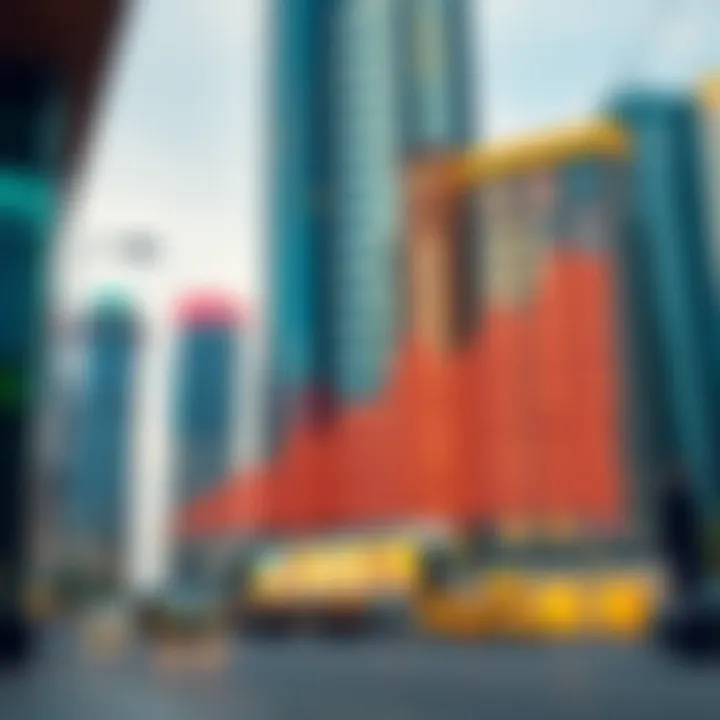
The benefits of community engagement extend from improving property values to fostering a sense of belonging. By encouraging feedback and interaction, stakeholders can identify the needs and desires of the residents. This collaboration helps in tailoring amenities and services that truly resonate with the community ethos. Moreover, involving residents in the decision-making process can cultivate a sense of ownership, ultimately attracting long-term inhabitants who are more invested in their surroundings.
Aspects to consider in community engagement include creating open channels for communication, organizing community meetings, and facilitating local initiatives that address specific concerns. Let’s explore two significant areas to highlight how community engagement unfolds around the Bin Suloom building:
Feedback from Residents
Feedback from residents living in the Bin Suloom building plays a crucial role in the building’s evolution and operational effectiveness. Gathering insights, opinions, and constructive criticism can shine a light on what works and what might fall short in this residential space. Residents often have valuable perspectives on various aspects, from maintenance issues to suggestions for new amenities.
An effective approach is to set up mechanisms whereby residents can easily voice their opinions. Possible methods include:
- Suggestion Boxes: Placing suggestion boxes in common areas for anonymous feedback can encourage residents to speak freely.
- Survey Platforms: Online platforms can help gauge resident satisfaction, track common concerns, and gather suggestions on various aspects of community life.
Engaging residents creates a symbiotic relationship, fostering a community where their needs are prioritized. When residents feel heard, they are more likely to engage positively with their environment. It enhances the sense of community, giving rise to initiatives that genuinely reflect the collective desires of the occupants.
Community Programs and Initiatives
Community programs and initiatives offer tangible benefits that enhance the living experience in the Bin Suloom building. These can range from environmentally-focused activities to recreational programs designed to unite residents.
Consider the following examples of initiatives that could be implemented:
- Health and Wellness Programs: Yoga classes, fitness challenges, and wellness workshops could be organized to promote healthy lifestyles among residents.
- Cultural Events: Hosting cultural festivals, art exhibits, or music nights provides opportunities for residents to come together and celebrate diversity within the community.
- Sustainability Campaigns: Initiatives aimed at encouraging recycling, waste reduction, and energy conservation can engage residents in matters that impact their living environment.
Such programs not only increase the attractiveness of the building but also foster strong bonds amongst residents. A cohesive community can enhance both resident satisfaction and the overall value of the property. By recognizing and addressing the unique needs of the community, the Bin Suloom building can leverage its position in Dubai’s real estate landscape while cultivating a welcoming atmosphere for current and future residents.
Overall, community engagement is a powerful construct that, when effectively leveraged, contributes to a thriving, prosperous environment around the Bin Suloom Building.
The Future of the Bin Suloom Building
The discussion around the Bin Suloom Building isn't merely about its current state or historical significance. The future of this architectural landmark holds considerable weight in Dubai's ever-evolving real estate market. As more developments pop up around this area and urban planning becomes increasingly sophisticated, the trajectory of the Bin Suloom Building will undoubtedly influence not just its immediate neighborhood but also the overall economic landscape of Dubai itself.
Projected Developments
When we talk about projected developments concerning the Bin Suloom Building, we aren't just envisioning renovations or cosmetic changes. There's potential for the space to serve varied functions which could enhance its appeal. The local government is keen on integrating smart technology into existing structures and new builds. This means we might see features such as energy-efficient systems or automated waste management services adapted into the Bin Suloom.
It's also likely that the area surrounding the building will see infrastructural upgrades. Here are some projections to consider:
- Smart City Initiatives: As Dubai pushes forward with its smart city goals, the Bin Suloom might incorporate features such as app-based visitor management and enhanced security systems.
- Cultural Hub: There's talk that the area may transform into a cultural hub, with art galleries and cafes sprouting nearby, attracting both tourists and locals.
- Mixed-Use Spaces: The future could see the Bin Suloom being re-purposed to include more mixed-use developments, bringing residential and commercial elements closer together.
Each of these potential developments not only serves to increase the building's value but can also make it more appealing to investors looking for properties with growth potential.
Impact on the Urban Landscape
The implications of the Bin Suloom Building's future to Dubai's urban landscape are substantial. Here’s why:
- Urban Regeneration: As the area evolves, there's a trickle-down effect on neighboring buildings and sectors. The Bin Suloom could become a catalyst for urban regeneration, prompting neighboring properties to invest in upgrades, thus enhancing the entire locale’s aesthetic and functionality.
- Increased Foot Traffic: If the predictions around transforming the Bin Suloom into a conducive environment for businesses hold true, foot traffic is bound to increase. This not only augurs well for retail outlets and restaurants but also improves community interactions.
- Environmental Considerations: Sustainability is at the forefront of global urban development. The incorporation of eco-friendly initiatives into Bin Suloom will emphasize a commitment to sustainability, possibly encouraging better environmental practices across the city.
The evolving nature of the Bin Suloom will likely reshape how residents and visitors alike engage with the urban environment, potentially revolutionizing the standard of living and working in Dubai.
Epilogue
The conclusion of this article encapsulates the essence of the Bin Suloom Building's role within Dubai's thriving property scene. It is not merely a physical structure; it reflects the amalgamation of architectural prowess, historical depth, and market potential. Understanding the Bin Suloom Building isn't just about pricing or investment; it's about appreciating the cultural narratives and urban evolution encapsulated in its walls.
In summary, several key elements stand out:
- Architectural Significance: The building serves as a prominent example of contemporary architecture, with features that cater to both aesthetic appeal and functional living.
- Market Value Dynamics: Its fluctuating market value signals a broader trend in Dubai's real estate, indicating opportunities as well as risks.
- Investment Viability: For prospective investors, the Bin Suloom Building offers a unique opportunity to engage with a property that is not only lucrative but also culturally relevant.
Potential investors should consider these insights carefully. The building's significance stretches beyond brick and mortar; it embodies a lifestyle and community that potential buyers or investors might find appealing.
"Investing in property is akin to planting a tree; it requires patience and foresight to witness it flourish."
In light of these factors, it's evident that the Bin Suloom Building holds considerable importance in Dubai's real estate landscape, presenting a blend of opportunity and cultural significance that investors should not overlook.
Summary of Key Insights
The Bin Suloom Building stands out as a focal point in Dubai's evolving property marketplace. Several pivotal insights resonate throughout this exploration:
- The architectural design reflects innovative modernity while remaining respectful of local culture.
- Historical roots illustrate not only the building’s journey but also its implications for community development and city planning.
- Factors such as market trends and predicted future developments underscore the building's investment potential.
- Community engagement amplifies the importance of this structure beyond its physicality, anchoring it as a vital part of the urban narrative.
These insights offer a roadmap for understanding the complex dynamics at play in the Dubai real estate market, particularly for stakeholders eager to make informed decisions.
Call to Action for Potential Investors
For those looking to dive into Dubai's real estate offerings, the Bin Suloom Building represents a golden opportunity that should not be missed. Here’s why you should take the plunge:
- Research the Market: Investigate current trends and historical data related to the Bin Suloom Building; this knowledge can guide your investment decisions.
- Evaluate Personal Goals: Consider what you hope to achieve through your investment—whether it’s capital appreciation, rental yield, or community involvement.
- Engage with Local Experts: Speak with real estate agents or property managers familiar with the area to gain insights that are not readily available online.
- Beware of Legalities: Understand the regulatory requirements that come with property ownership in Dubai, ensuring you’re capable of navigating these complexities.
- Take Action: When ready, approach the property with a well-informed strategy and a solid offer that reflects its value in the current market.
As the real estate landscape in Dubai continues to evolve, acting now might just position you ahead of the curve. The Bin Suloom Building is not just a property; it’s a piece of a larger tapestry that is continually being woven into the fabric of Dubai’s dynamic urban environment.







